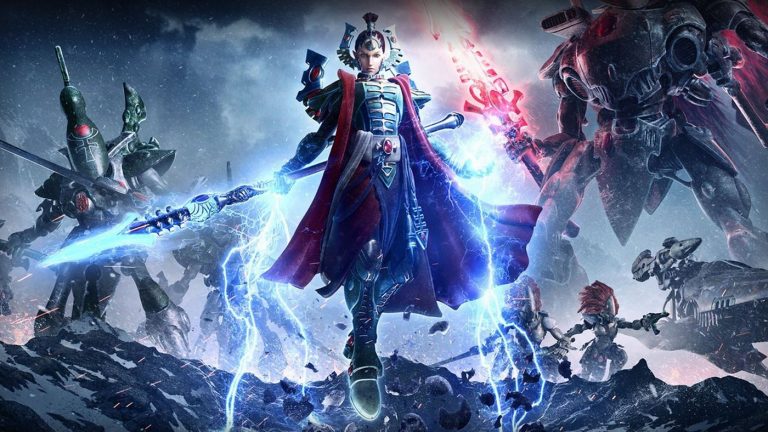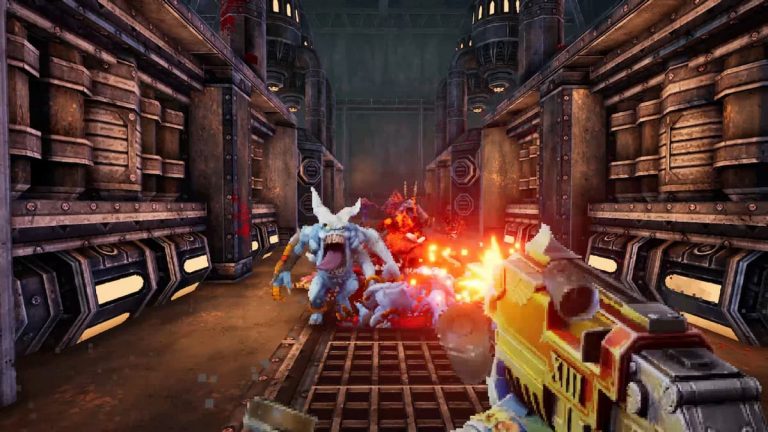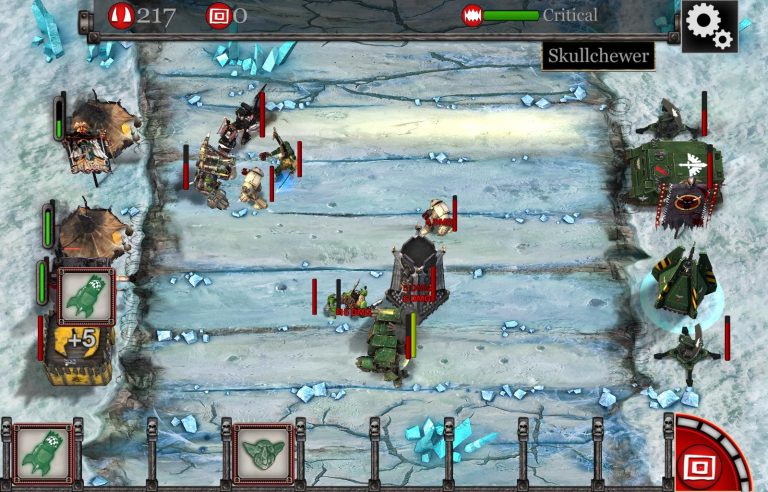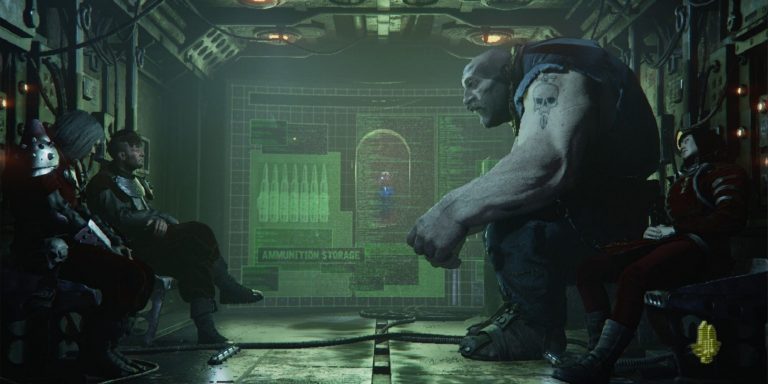Warhammer 40k Games: Building And Painting Miniatures
Step into the exciting world of Warhammer 40k games, where you can unleash your creativity and strategic prowess through building and painting miniatures. Whether you’re a seasoned hobbyist or a curious newcomer, the process of assembling and customizing these intricate figures offers a rewarding and immersive experience. In this article, we’ll explore the captivating world of Warhammer 40k games, delve into the art of building and painting miniatures, and discover the joy that comes from bringing your own unique creations to life.
Warhammer 40k games have captured the hearts of hobbyists and gamers alike with their rich lore, stunning visuals, and strategic gameplay. From the grim darkness of the distant future to the epic battles fought across vast star systems, these games transport players into a dystopian universe where humanity fights for survival against alien races and ancient horrors. But it’s not just about playing the game; it’s about the journey of crafting and personalizing your own miniatures.
Building and painting miniatures is an art form in itself. As you carefully assemble each piece, you’ll witness the transformation from a collection of plastic or metal parts into a unique character or vehicle. The process allows you to let your imagination run wild, choosing from a wide range of factions, colors, and designs. And when it comes to painting, the possibilities are endless. Whether you prefer bold and vibrant schemes or weathered and battle-worn aesthetics, the act of bringing your miniatures to life with a brush is a deeply satisfying and meditative experience. So, grab your glue, paints, and brushes, and let’s dive into the world of Warhammer 40k games, where creativity knows no bounds.
If you’re a fan of Warhammer 40k, building and painting miniatures is a crucial aspect of the hobby. To get started, gather your desired miniatures, paints, and brushes. Follow the assembly instructions carefully, making sure to remove any mold lines and glue the pieces together securely. Once assembled, it’s time to bring your miniatures to life with paint. Begin by priming the models, then apply layers of paint using techniques like dry brushing and washes. Don’t forget to add fine details, such as highlighting and shading, to make your miniatures stand out on the tabletop. Happy gaming and painting!

Warhammer 40k Games: Building and Painting Miniatures
Warhammer 40k is a popular tabletop wargame that involves building and painting miniatures to create armies for epic battles. The game is set in a futuristic universe where various factions fight for control over different planets. Building and painting miniatures is an important aspect of the game, allowing players to personalize their armies and bring them to life on the tabletop.
Building Miniatures
Building miniatures is the first step in creating your Warhammer 40k army. Each faction has a wide range of miniatures available, including infantry, vehicles, and monstrous creatures. The miniatures come unassembled and unpainted, allowing players to customize their armies to their liking. Building miniatures requires patience and attention to detail, as each piece needs to be carefully glued together.
When building your miniatures, it’s important to follow the instructions provided in the kit. These instructions will guide you through the assembly process, showing you which pieces to glue together and in what order. It’s also helpful to have a pair of clippers and a hobby knife on hand to remove any excess plastic and clean up the pieces.
Once you’ve assembled your miniatures, you can further customize them by adding additional details, such as weapons or accessories. Many Warhammer 40k players enjoy kitbashing, which involves combining parts from different kits to create unique and personalized miniatures. This allows you to truly make your army your own and showcase your creativity.
Benefits of Building Miniatures
Building miniatures for Warhammer 40k offers several benefits. Firstly, it allows you to immerse yourself in the hobby and engage in a creative process. Assembling the miniatures can be a therapeutic and enjoyable experience, allowing you to focus on the intricate details and bring your vision to life. Additionally, building miniatures helps develop patience and attention to detail, skills that can be beneficial in other areas of life.
Another benefit of building miniatures is the social aspect. Warhammer 40k is a community-driven game, and many players enjoy sharing their progress and techniques with others. By building miniatures, you become part of a larger community of hobbyists who can offer advice, inspiration, and support. This sense of camaraderie can enhance your overall Warhammer 40k experience.
Painting Miniatures
Once you’ve built your miniatures, the next step is painting them. Painting miniatures allows you to add color and detail to your army, bringing them to life on the tabletop. It’s an opportunity to showcase your artistic skills and create unique and eye-catching models.
Before you start painting, it’s important to prepare your miniatures. This involves cleaning them to remove any mold release agent or oils from the manufacturing process. You can use warm soapy water and a soft brush to gently clean the miniatures. Once they are dry, you can prime them with a spray primer. Priming helps the paint adhere to the surface of the miniatures and provides a smooth base for painting.
Choosing Paint Colors
When it comes to painting miniatures, the color choices are endless. Each faction in Warhammer 40k has its own unique color schemes, but you can also create your own custom scheme. It’s important to choose colors that reflect the theme and atmosphere you want to create for your army. You can use a variety of techniques, such as layering, dry brushing, and washes, to add depth and highlights to your miniatures.
It’s also helpful to invest in quality brushes and paints. Fine-tipped brushes allow for precise detailing, while high-quality paints provide better coverage and color vibrancy. Experimenting with different techniques and materials can help you find your own painting style and achieve the desired results.
Tips for Painting Miniatures
Painting miniatures can be a daunting task, especially for beginners. Here are a few tips to help you get started:
1. Start with the basics: Begin by painting the larger areas of your miniatures, such as the armor or clothing. This will give you a solid base to work from and make it easier to add smaller details later.
2. Thin your paints: Thin your paints with water or a specialized medium to achieve smoother and more controlled application. This will prevent the paint from looking thick and clumpy on the miniature.
3. Practice dry brushing: Dry brushing is a technique where you lightly brush a dry brush over raised areas to create highlights. This can add depth and texture to your miniatures without the need for intricate detailing.
4. Take breaks: Painting miniatures can be time-consuming and require a steady hand. Take breaks to rest your eyes and hands to prevent fatigue and ensure better painting results.
By following these tips and practicing regularly, you’ll improve your painting skills and create stunning miniatures for your Warhammer 40k army.
Warhammer 40k Games: Building and Painting Miniatures – VS Other Tabletop Games
Warhammer 40k is not the only tabletop game that involves building and painting miniatures. There are several other popular games in the genre, each with its own unique mechanics and themes. Let’s take a look at how Warhammer 40k compares to other tabletop games when it comes to building and painting miniatures.
Warhammer 40k vs. Age of Sigmar
Warhammer 40k and Age of Sigmar are both games produced by Games Workshop, but they have distinct settings and gameplay. When it comes to building and painting miniatures, both games offer a similar experience. The miniatures in both games come unassembled and unpainted, allowing players to customize their armies. The building and painting process for both games require attention to detail and creativity.
However, Warhammer 40k focuses on a futuristic sci-fi setting, while Age of Sigmar takes place in a fantasy realm. This difference in setting is reflected in the design of the miniatures and the painting techniques used. Warhammer 40k miniatures often feature futuristic armor and weapons, while Age of Sigmar miniatures may have more ornate and fantasy-inspired designs.
Warhammer 40k vs. Warhammer Fantasy
Warhammer Fantasy, the predecessor to Age of Sigmar, was a popular tabletop game that focused on a fantasy setting. While Warhammer Fantasy is no longer in production, many players still enjoy building and painting the miniatures from this game. The building and painting process for Warhammer Fantasy are similar to Warhammer 40k and Age of Sigmar, requiring attention to detail and creativity.
The main difference between Warhammer Fantasy and Warhammer 40k lies in the setting and theme. Warhammer Fantasy features a world of medieval fantasy, with knights, wizards, and mythical creatures. This difference in setting is reflected in the design of the miniatures and the painting techniques used. Warhammer Fantasy miniatures often have a more traditional fantasy aesthetic, while Warhammer 40k miniatures have a futuristic and sci-fi look.
Warhammer 40k vs. Dungeons & Dragons
Dungeons & Dragons (D&D) is a popular tabletop role-playing game that focuses on storytelling and character development. While D&D doesn’t have the same emphasis on building and painting miniatures as Warhammer 40k, many players still enjoy customizing their characters with painted miniatures. The painting process for D&D miniatures is similar to other tabletop games, requiring attention to detail and creativity.
The main difference between Warhammer 40k and D&D lies in the gameplay and mechanics. Warhammer 40k is a wargame that involves strategic battles on a tabletop, while D&D is a role-playing game where players create characters and embark on adventures. Both games offer unique experiences and cater to different preferences.
In conclusion, Warhammer 40k offers a unique and immersive experience when it comes to building and painting miniatures. The hobby aspect of the game allows players to unleash their creativity and showcase their artistic skills. Whether you’re a seasoned veteran or a beginner, building and painting miniatures for Warhammer 40k is a rewarding and engaging process that enhances the overall gaming experience. So gather your paints, brushes, and miniatures, and embark on a journey of creativity and strategic battles in the Warhammer 40k universe.
Key Takeaways: Warhammer 40k Games: Building and Painting Miniatures
- Warhammer 40k is a tabletop game where players build and paint miniature models.
- Building the models requires careful assembly and following instructions.
- Painting the miniatures allows players to customize their armies and bring them to life.
- Practicing patience and attention to detail is important when building and painting miniatures.
- Warhammer 40k games are not only about playing, but also about the hobby of building and painting.
Frequently Asked Questions
What are some tips for building Warhammer 40k miniatures?
Building Warhammer 40k miniatures is a fun and rewarding hobby. Here are a few tips to help you get started:
1. Read the instructions: Before you start building, carefully read the instructions that come with the miniature kit. Pay attention to any special tools or techniques that may be required.
2. Clean and prepare the parts: Use a hobby knife or file to remove any excess plastic or mold lines from the parts. This will ensure a clean and smooth finish.
3. Dry fit before gluing: Before applying glue, dry fit the parts to see how they fit together. This will help you identify any issues or adjustments that need to be made.
4. Use the right glue: Use plastic glue specifically designed for miniature models. This will provide a strong bond without damaging the plastic.
What paints should I use for painting Warhammer 40k miniatures?
Painting Warhammer 40k miniatures is a creative and artistic process. Here are some paint recommendations:
1. Acrylic paints: Acrylic paints are the most common choice for miniature painting. They are easy to work with, dry quickly, and come in a wide range of colors.
2. Warhammer-specific paints: Games Workshop, the company behind Warhammer 40k, offers a range of paints specifically designed for their miniatures. These paints are formulated to adhere well to the plastic and provide excellent coverage.
3. Brushes: Invest in a set of good quality miniature brushes. Different brush sizes and shapes will allow you to achieve different effects and details in your painting.
4. Thin your paints: Thin your paints with water or a dedicated medium to achieve smoother and more controlled application. This will help prevent the loss of fine details on the miniature.
How can I improve my painting skills for Warhammer 40k miniatures?
Improving your painting skills is a continuous process. Here are a few tips to help you enhance your painting techniques:
1. Practice regularly: The more you paint, the better you will become. Set aside dedicated time for painting and try to paint on a regular basis to build your skills.
2. Study tutorials and guides: There are many tutorials and guides available online that can teach you different painting techniques and tips. Study them and experiment with new techniques to expand your skill set.
3. Join a painting community: Joining a painting community or forum can provide valuable feedback and advice from experienced painters. Share your work, ask for feedback, and learn from others.
4. Experiment with different techniques: Don’t be afraid to try new things and experiment with different painting techniques. This will help you discover your own style and improve your overall skills.
How do I ensure a smooth finish when painting Warhammer 40k miniatures?
Achieving a smooth finish on your painted Warhammer 40k miniatures can greatly enhance their overall appearance. Here are a few tips to help you achieve a smooth finish:
1. Prime the miniatures: Before painting, make sure to prime your miniatures with a suitable primer. This will provide a smooth and even surface for the paint to adhere to.
2. Thin your paints: As mentioned earlier, thinning your paints with water or a medium will help you achieve a smoother application. Multiple thin layers of paint will result in a more even and professional-looking finish.
3. Use smooth brush strokes: When applying paint, use smooth and controlled brush strokes. Avoid rushing or applying too much pressure, as this can lead to brush marks or uneven coverage.
4. Seal with varnish: Once you have finished painting, seal your miniatures with a matte or satin varnish. This will protect the paint job and provide a smooth and consistent finish.
Are there any alternative methods for building and painting Warhammer 40k miniatures?
While the traditional method of building and painting Warhammer 40k miniatures is the most common, there are alternative methods you can explore. Here are a few:
1. Kitbashing: Kitbashing involves combining parts from different miniature kits to create unique and customized models. This allows for greater creativity and personalization.
2. Airbrushing: Airbrushing is a technique that uses an airbrush to apply paint. It can result in smooth and seamless finishes, and is particularly useful for large surfaces or vehicles.
3. Weathering: Weathering is the process of adding realistic wear and tear effects to your miniatures. This can be achieved through techniques like dry brushing, rust effects, or chipping.
4. Non-traditional paints: While acrylic paints are commonly used for miniature painting, you can also explore other types of paints such as oil paints or enamel paints. These can offer unique textures and effects.
Warhammer 40k EPIC – The Best game Games Workshop Abandoned…
Final Thoughts on Warhammer 40k Games: Building and Painting Miniatures
When it comes to Warhammer 40k games, building and painting miniatures is an essential part of the hobby. Not only does it allow you to personalize your army and bring your imagination to life, but it also adds depth and immersion to your gaming experience. Whether you’re a seasoned veteran or just starting out, the process of assembling and painting miniatures is both rewarding and therapeutic.
Building and painting miniatures is like creating a masterpiece on a miniature scale. It requires patience, precision, and a keen eye for detail. As you carefully glue each piece together and apply layer after layer of paint, you’re not just creating a tabletop army, but also expressing your creativity and passion. The satisfaction of seeing your finished models, with their vibrant colors and intricate details, is truly gratifying.
Not only does the act of building and painting miniatures enhance your gaming experience, but it also opens up a world of possibilities for customization. From choosing different weapon options to converting models to fit your vision, the creative freedom is endless. You can truly make your army unique and stand out on the gaming table.
In conclusion, Warhammer 40k games are not just about the battles and strategies. Building and painting miniatures is an integral part of the hobby that allows you to showcase your creativity and bring your army to life. So, grab your brushes, assemble those miniatures, and let your imagination run wild. The world of Warhammer 40k is waiting for you to leave your mark.





